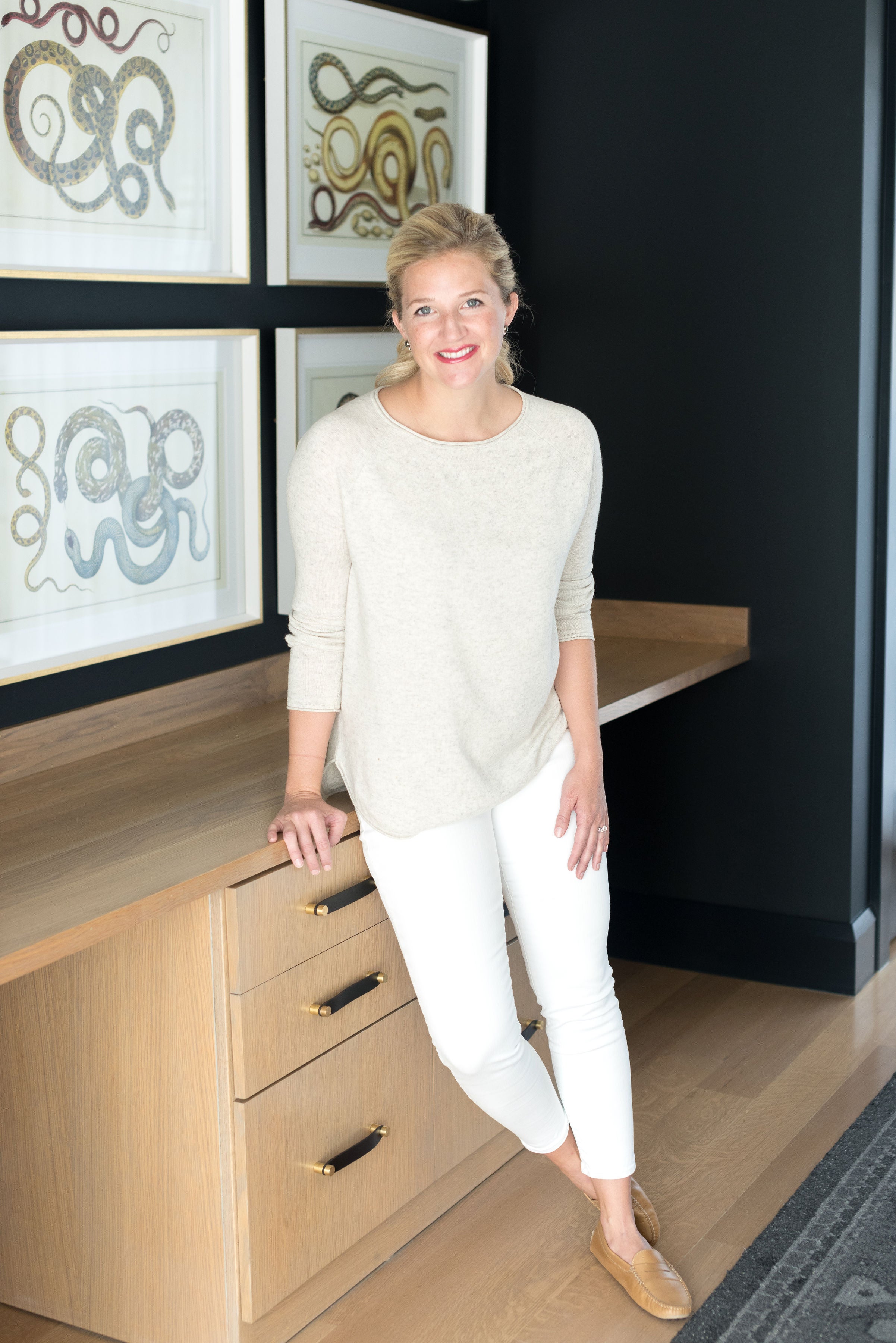The 50 States Project is a yearlong series of candid conversations with interior designers, state by state, about how they’ve built their businesses. Today, we’re chatting with Tulsa, Oklahoma–based Bailey Austin Bird of Bailey Austin Design about how her versatile design skills let her clients’s tastes shine, why she doesn’t apologize for being expensive, and the hard-won lessons she’s learned about billing, markups and client communication.
What was your introduction to the design world?
I started really young. My parents designed a house when I was 5, and the architect was one of my mom’s best friends. He let me feel like I was a big part of it—I’m sure I wasn’t, but he certainly let me feel that way. As I got older, he went on to be a pretty big mentor for me. In fourth grade, my class built these toothpick bridges, and the two of us drew blueprints for it. He was super-invested [in my interest in the field], which was kind of the start.
I went to architecture school at Oklahoma State University, and from there I did a preceptorship with [Pelli Clarke Pelli Architects] at the firm’s main office in Connecticut for a year, then transferred to their New York office and worked there for another year. That was all commercial architecture, and I liked it, but it wasn’t my passion. I wasn’t sure why I was not 100 percent fulfilled by it, because the job and the work was amazing.
How did you start to realize what was missing?
We were presenting to lots of boards. Those people were invested in the project, for sure, but mostly from a financial standpoint.
Balance-sheet thinking, not passion?
Passion! Yes, it wasn’t passion. It wasn’t like, “Oh, my gosh, this is going to change my life,” or “My family’s going to live here and we are going to make so many memories.” It was like, “Oh, this boardroom looks great. That’ll do the trick.” That’s how I identified what was missing.
Did you have any experience doing residential work at that point?
Not at all. Almost everything in school is commercial—most architecture schools are kind of snobby like that, as if commercial architecture is far superior to residential work, but most of the architects that the average person knows about are residential architects. When I moved back to Tulsa, I started working for a residential firm in town and they were great—they let me bite off more than I could chew, and I just loved it. I totally dove in. I loved meeting the clients—and in that first year, I had some particularly wonderful clients. They were nice families, great kids, great relationships with one another, and it made the whole process so enjoyable. That firm was a husband-and-wife team where they did architecture and interiors, so I was able to do both, and I realized that was the approach I wanted to take.
You were ready to launch your own firm.
After almost two years there, I started a firm with another woman from that firm, Mel Bean, in 2011. It was an awesome partnership.
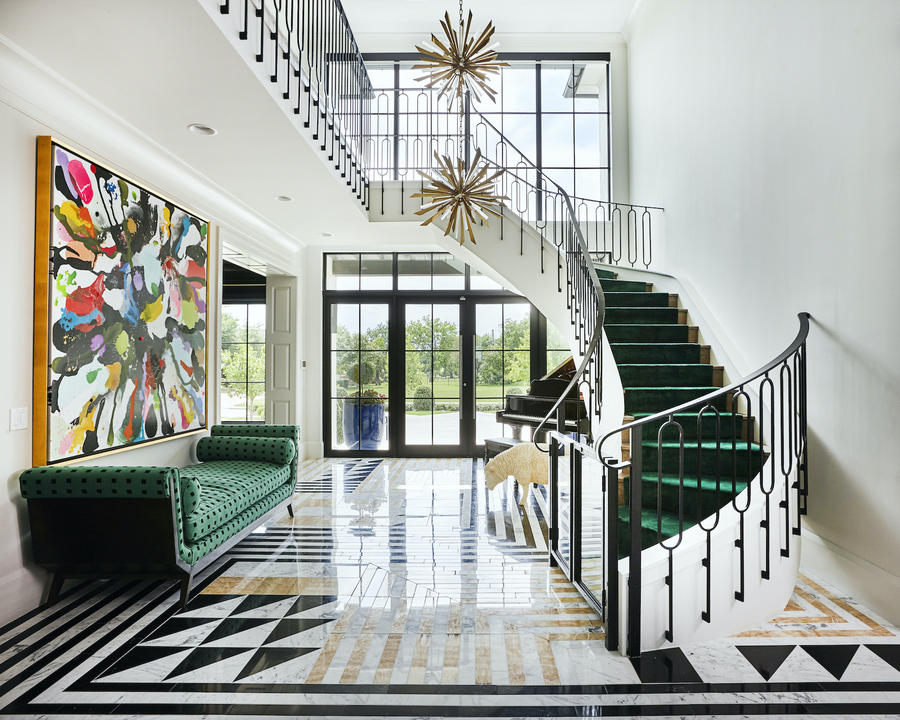
What was that aha moment of ‘We can do this together’?
We were having drinks, and I just said, “I think this is my next move.” One of my big projects was wrapping up, and I had been thinking that I’d probably go on my own after that. And she was like, “I’ve been thinking the same thing!” We met the next day and then just went for it—the naivete of it was amazing. If I had been married or had children, I probably wouldn’t have been so bold, but we just did it, and we had so much fun.
But eventually you went out fully on your own.
I had three kids in three years, so my life changed drastically on a personal level. After I had my third child, I wanted to scale down, so [Mel and I] separated very amicably at the end of 2018. [We] are still great friends. I think people were hoping it was some kind of drama, but it was really just two people who had personal lives that weren’t in sync at that time; my kids are all young—they’re 5, 4 and almost 3 right now—so I won’t be coming back full throttle like I was [for a long time]. When [our firm split], I think I had 34 projects under my belt. ... Now I’m working on six.
Wait, you were working on 34 things at one time?
Yes! It was just not sustainable in that period of my life.
What did the team working with you look like to support that kind of lift?
Mel and I started in this little 1,000-square-foot house, then gradually added people because we had committed to so much work. We were working crazy hours, and kind of reached our capacity in that space when there were five of us. We moved to a huge, 3,000-square-foot office and added a small showroom. It wasn’t a store, but being geographically located in Tulsa, there’s nothing here. We can’t run to a showroom and sit on a sofa, or try out several different brands. So in our showroom, we had [pieces from] three different upholstered goods brands that you could sit on, you could see some case work and accessories, and then we would order everything. Anyway, we moved into this big space and ended up with—I think at the height of our growth, the team was 14 or 15 people.
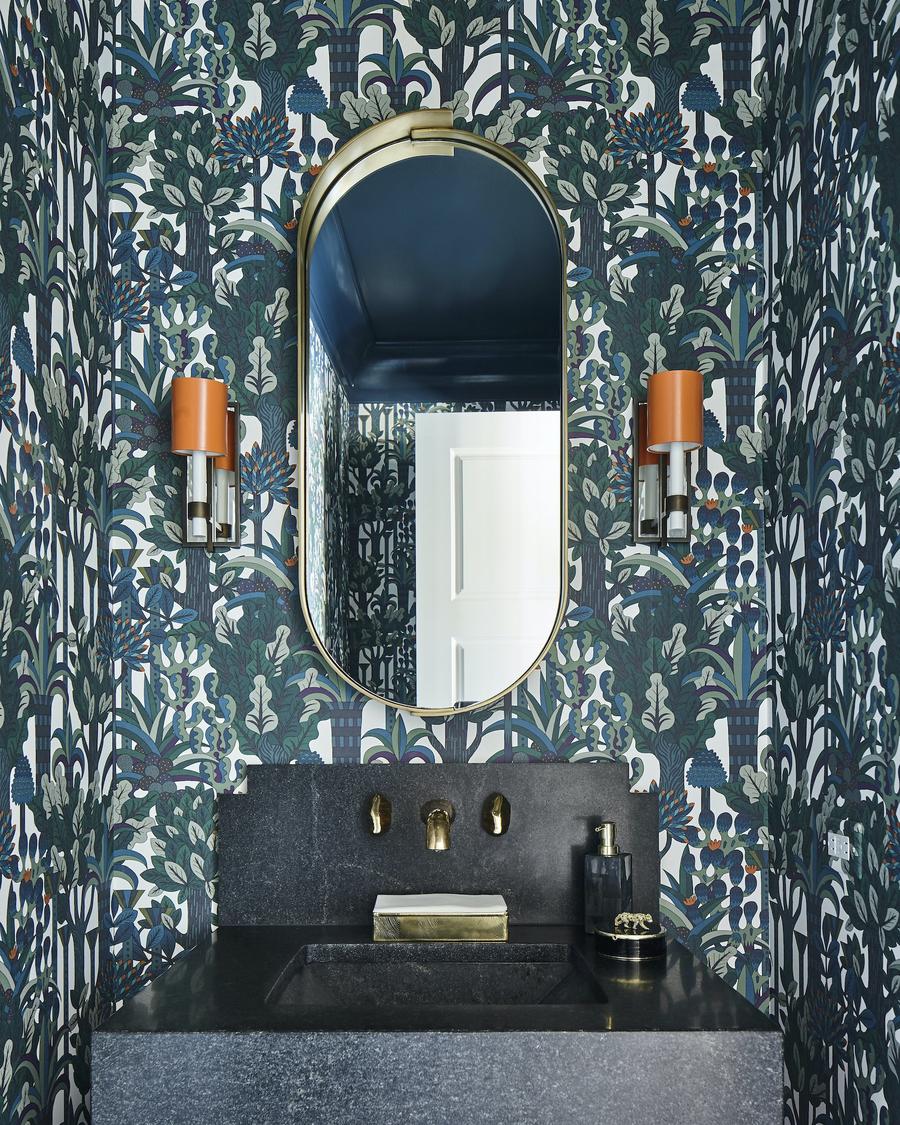
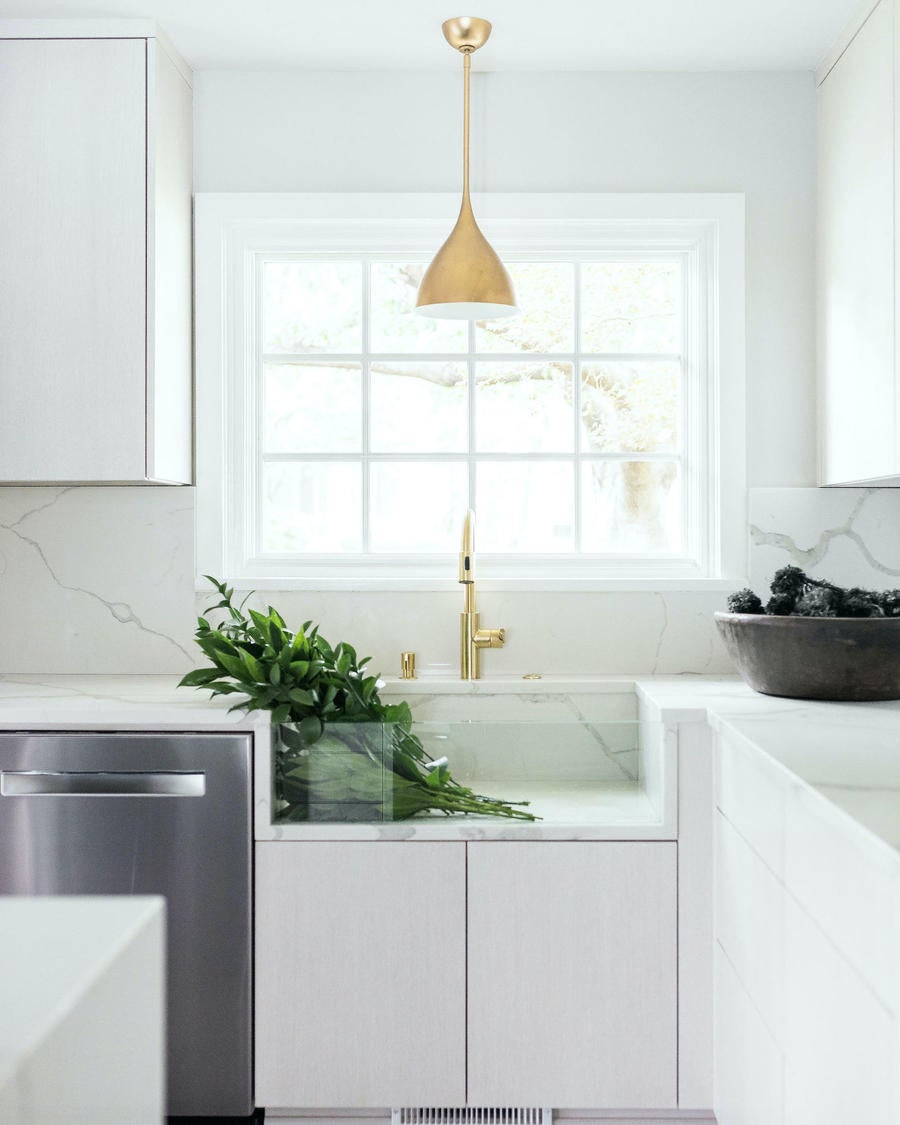
In the span of five or six years, right? That’s huge.
It was great. But it does totally change the way you work. You become more of a manager of design and people versus a designer. But I liked the design work, so it was a transition [where] I couldn’t pinpoint what it was l disliked about it. My team now is just three of us, plus one part-time person, and I love it. I love being small again and having a smaller workload, but mostly I love really doing the work with my own hands every day.
I feel like I’ve heard that a lot—that you think that bigger equals success, but then you look around and realize, ‘This isn’t the job I want.’
Yes, yes! You’re totally right, you think that those two things go hand in hand, and they absolutely don’t. You think that’s what you want, and then you realize that it’s not. And you don’t have to do it.
Your team of four—what do they each do, and how did you decide that those were the supporting roles you needed?
One is me, the part-timer is our accountant, and then we have an office manager and an interior designer.
Our office manager, Iman, is amazing—she takes all the calls, which is so important because that’s the first person a potential client speaks with. She does our client intake, all of our ordering, manages our sample showroom, and was updating our website yesterday. She’s a jack of all trades, a lovely person to be around, and she has a nurturing personality, which I knew I needed. And then Ellie is an interior designer who previously worked at Fabricut, which is located in Tulsa; she has an interior design degree but worked in their marketing department and came well recommended by everyone there. She’s positive, a go-getter, and really good at adapting to other people’s styles instead of trying to push her personal style onto somebody else, and I think that’s pretty integral to our firm. I have my own personal go-to style, but I love having variety. If you look at our website, we have some really glam-y projects.
I was going to ask you about that—there is a really wide range!
There is, and I like it—I think it’s fresh, and I like being able to respond to all the personalities and dynamics of people, couples and families. To me, that’s what keeps it all interesting. I have my own style, which, compared to some of those projects, people would probably think is kind of boring. It’s very neutral and natural. I’m trying to get more of that out there so people can see what my personal taste is, but at the same time, I kind of like that it’s not at the forefront. I don’t want people to think I’m only going to design one way.
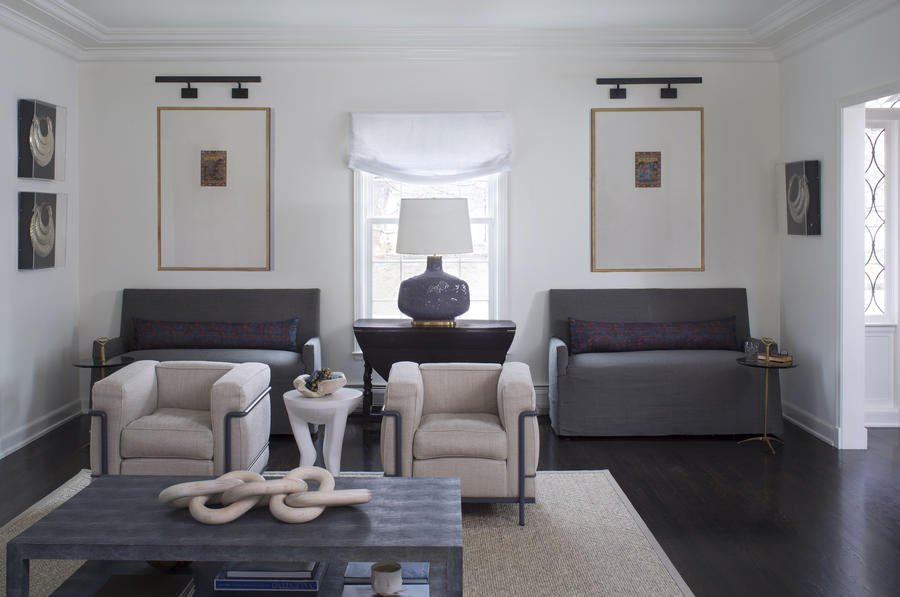
That approach of adapting aesthetically to what your clients want—do you feel like that has helped or hindered in terms of brand recognition?
It’s interesting, because it’s super difficult to brand yourself. Probably five years ago, Mel and I had talked with someone [who said], “If you want to get picked up by a line or do this or that, and that’s what you want your trajectory to be, then you need to identify what your look is.” And both of us said, “I don’t think we want a look.” We decided at that point that that wasn’t really as important to us as the design itself. I mean, the branding and everything—I won’t say that it wouldn’t be amazing, but you can’t have it both ways. If you have diverse work, there’s no way someone’s going to be like, “That’s definitely her work,” because it’s all over the place.
I think it goes back to: What is success, and how do you define it? Every person’s different, and for me, I realized that really wasn’t part of my success. My success is more in the client and personal relationships and asking myself: Am I proud of my work?
You said you have six clients right now. How do they find you?
A lot of it is word of mouth. I joked for a while that I was on this rancher circuit—literally. I had all these houses that were hours away on these beautiful properties, and all these gorgeous homes, and they were all ranchers. I was like, Did they all get together and talk at an event?
How do you decide what you say yes to now that you’ve streamlined?
Coronavirus had me so anxious about what I was going to do going forward. My husband has a business, too, and it was very difficult and stressful—I mean, I took my kids to two job sites because it’s what I felt like I had to do. I loaded them in the car, put a movie on, it was an hour and a half away, and then they got out of the car and ran around in this field, which was fine, but like, I had to have a meeting. It was the most bizarre, bizarre time.
All that being said, it forced what I had been trying to do for quite a while, and I just [decided] I’m not taking any new clients until February 2021. I just didn’t know what the fall would look like, or if the kids would be back in school—or if they did go back to school, how long it would be—and so I just said, “We’re going to work with what we have, and then if and when I feel more comfortable, I’ll start taking on a project at a time.” Now, that sounds really good if I stuck to my guns, but in reality I took on three other projects—but one of them, which I agreed to in June, I don’t actually start until next week, so I did postpone the timeline. I also interviewed the client pretty intensely from the standpoint of time, personality and budget. I just didn’t want any surprises at all. Normally, I feel like I can roll with it, but the stress load made me laser-focused on those things that were absolutely important before I said yes to anyone.
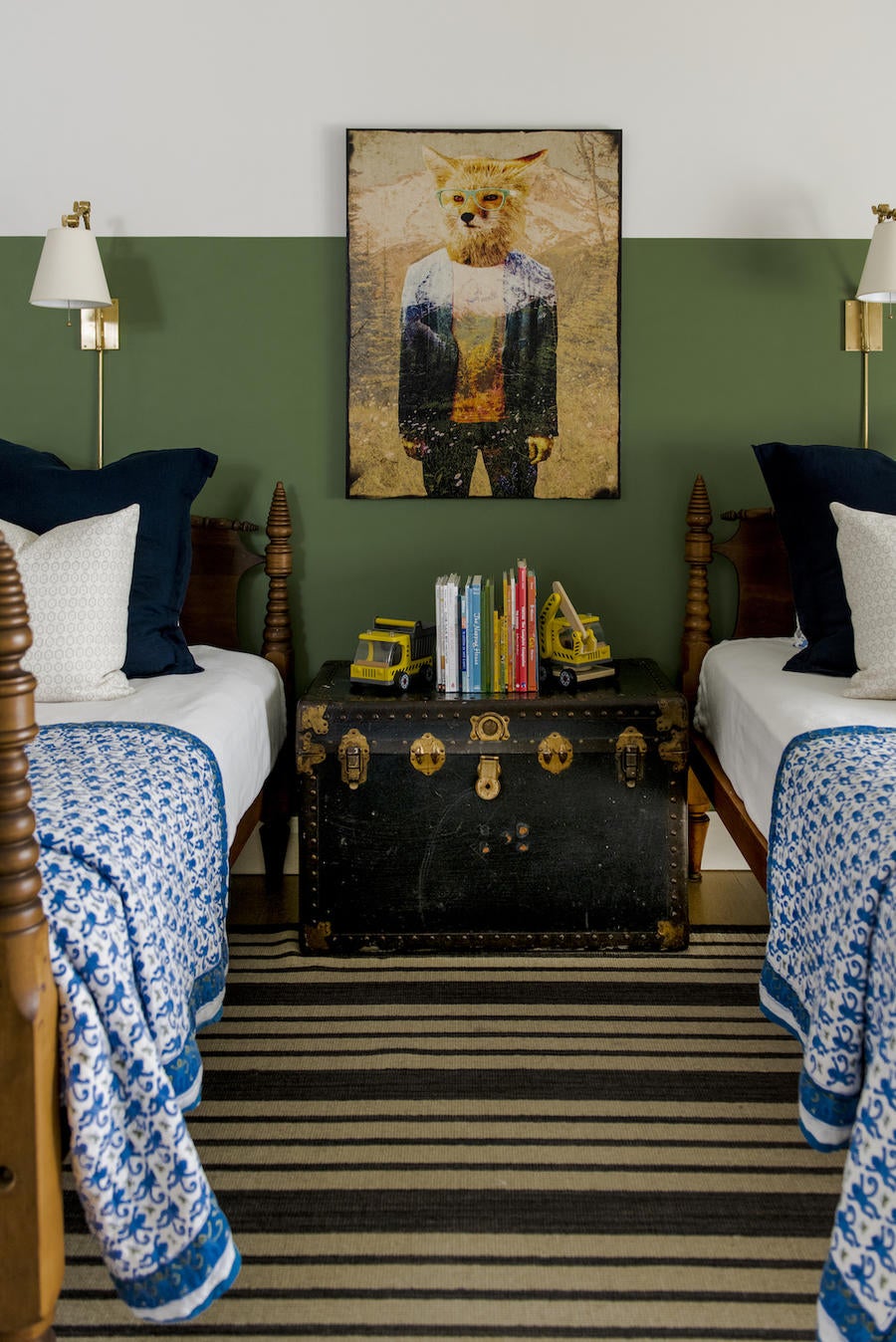
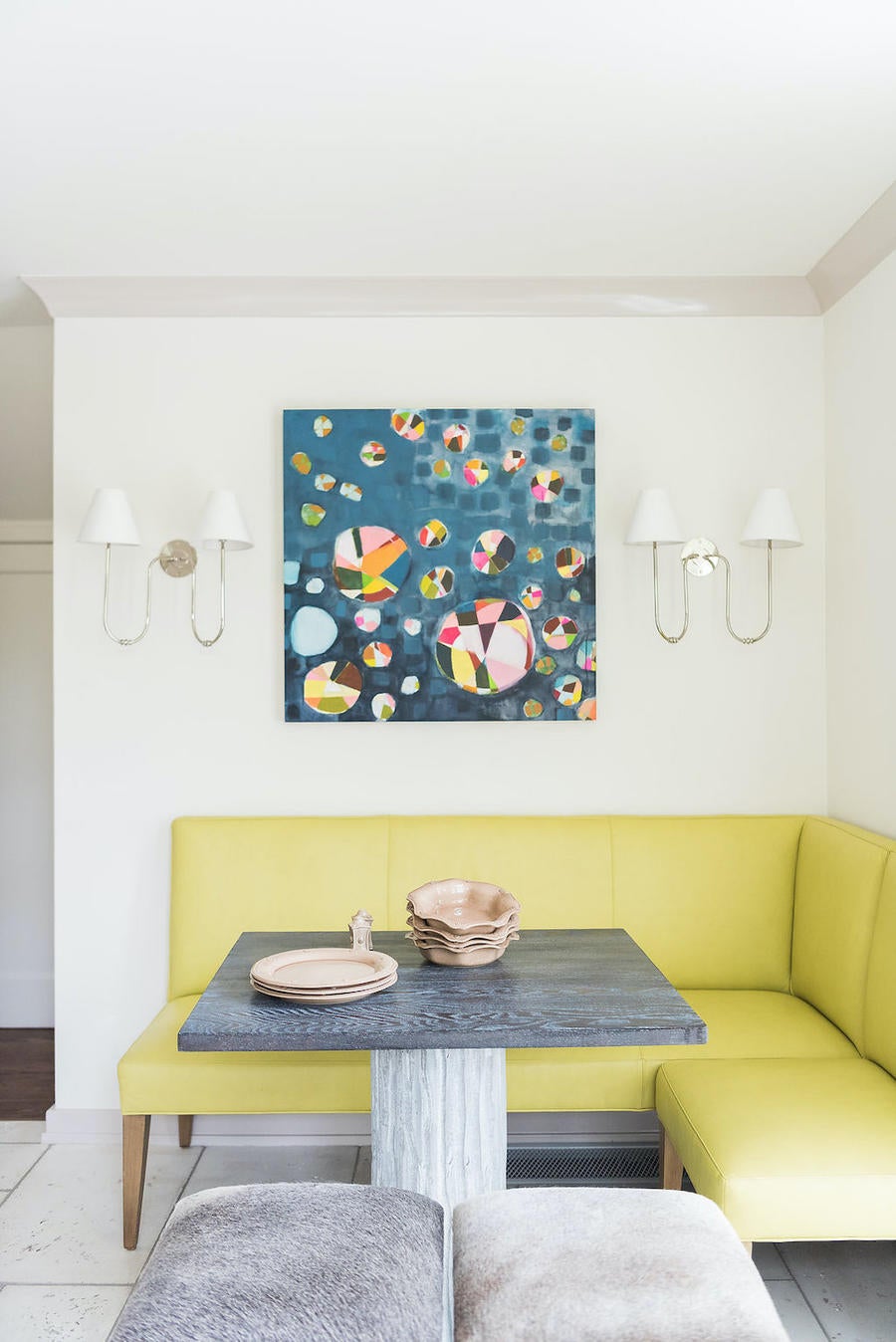
What are those qualities? What does someone need to have to be the right client for you right now?
A realistic budget—in terms of purchasing, but also in terms of fees. Fees for real custom design work, they’re just expensive. I had someone call just last week, and they said, “Bailey, we really want to hire you, but we heard you’re really expensive.” And I said, “Yes, I am.”
That’s an amazing answer. No regrets, no apologies.
I was like, “If you’re not comfortable with that, I totally get it, and there are lots of other people.” I told him I don’t want to have a conversation every time we bill, because if I am honest, I’ve already cut hours before I sent them to you because I want to make sure we’re giving you quality hours. I am expensive because I’m really thorough, I put a lot of time into it, and my hourly rate is higher than some of my contemporaries. And he was like, “Thanks for the honesty.” I mean, you kind of have to be straightforward, and I just put it out there.
I’ve done projects where they’ve had an FF&E [furniture, fixtures and equipment] budget of a million dollars, which for Tulsa is big—but the houses are huge here, too, compared to a lot of the country. This is McMansion central. An 8,000-square-foot house is kind of normal for my clients. But someone else might have a budget of $300,000, which isn’t tiny, but you also have to be realistic [about the fact] that if you have an 8,000-square-foot house, that’s not going to get you very far. I try to have those conversations very bluntly at the beginning, because it’s not fun to start a project and then get nickel-and-dimed. If they have that mindset, then they’re always on the defense.
The “how can I make this cheaper” kind of thinking?
Yes, and you’re kind of sucking the life out of the project and costing yourself so much in fees. I have said, “You might feel like you’re saving yourself $1,000 on that sofa, but it just cost you $1,500 for me to re-source something that you like that fits in your price range, that’s still the same fabric, that is still COM”—all of these things that didn’t actually save you money.
Do you bill hourly for everything?
I do all hourly because a lot of my projects will start off as architectural and then morph into interiors or vice versa. We’ll start with a small interiors project, and then it’s like, “Oh, and I want to do a back patio and an outdoor living space.” [Billing hourly] lets it be super versatile. We have tiered pricing on those rates for me, for Ellie, and for purchasing. We travel a lot, too—I had a couple projects in Denver—so I had a flat fee for the day rate. And then we do mark up our furniture, but we don’t mark it up to full retail, mostly because I feel like you can’t really mark it up the same way you used to because people will just shop it, so you have to protect yourself. You want to sell that product, you want to make that sale and make money [doing it], but you don’t want to price it so high that you risk losing the sale altogether—and especially in our case, where we’re still charging for the time to procure, purchase, receive and deliver.
Is all of that itemized for your clients?
We’re super transparent about it. If we work for four minutes on a phone call on your sofa detail, we’ll put that in our time sheet. Now, does that mean I charge the client every time for that? No. But I’m a crazy person about tracking the time, because if you don’t track the 16 times that the purchasing person made a four-minute call, you’re out three-quarters of an hour of your day, and that can be for just one client—and then you’re doing it for another client, and then all of a sudden, you have one person who’s only billing 50 percent of their time.
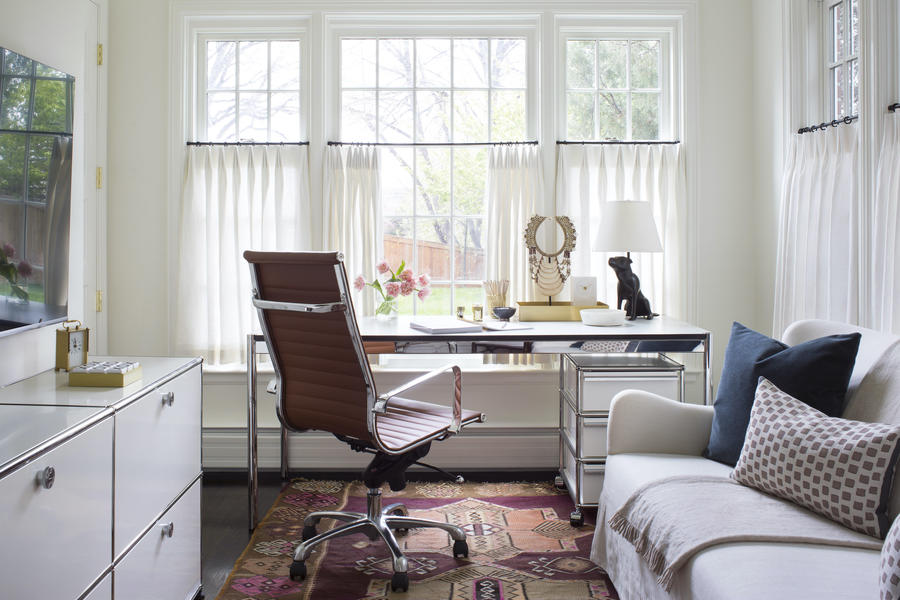
How do you keep track of time? So many people tell me they hate doing it.
We use Harvest. It’s an app, and you can use it on your desktop and your phone. You open it up, put in your client’s name, and if you’re going to a meeting, you can set a timer and then turn the timer off when you leave. It’s annoying, but you just have to get in the habit—just do it and stop whining about it if you don’t want to lose money.
When you’re sending that bill, what are the things you won’t charge for after all?
If I feel like I was doing research that maybe went off into a tangent of my own personal interests, or maybe it was a detail that I’d never done before and I was really struggling or trying to figure that out and I felt like [the time it took] was excessive, I would either reduce that time or take it off completely. That said, in the spirit of transparency, I do think most people in this day and age who are hiring a designer, you know, they’re not our parents, who just got these blanket bills and were like, “Sure! They said it was $2,000!” People want to know what they’re getting charged for, and I think that’s OK, for sure, but I also let them know what I didn’t charge them for.
So even if I spent those four minutes coordinating that detail and I’m not going to charge them for it, I will leave it on the invoice, but I’ll just zero out the total. I want them to know, “Here’s your project, this is all the time it took us, and I’m not charging you for all of it, but I want to educate you on that process.” That it takes a lot of coordination, and that design is really only 20 percent; the actual making it happen is the rest.
Do clients respond well to that?
They do. I think at times you’re putting yourself out there for questions [by doing it that way]. When you’re detailing that much information, it definitely gives someone the opportunity to be like, “Why did it take you this long?” But I also think that’s nice, because it’s a great way to keep an open dialogue and say, “Thanks so much for asking about that, this is what we did.” Although I’d say that’s the only downside, too, is that it forces you to have conversations that you’d sometimes rather avoid.
Everyone loves talking about money!
That’s the hardest question for people when they call to set up an appointment. We’ll ask what their budget is and they’re like, “Uh, I don’t know!” And you’re like, How could you not know? If you’re calling somebody and you want to do a kitchen remodel, you definitely have had that conversation. You know. Just tell us! I don’t know what they think is going to happen, but it’s just funny.


What is the design community like in Tulsa?
You kind of know who everyone is, and what their process is. You kind of know what everybody’s rates are and what they’re doing. It’s very small, especially if you’re in Midtown, which is the nicer area of town where you overlap on types of clientele. There’s plenty of work to go around, so it’s not like I feel beaten out of something.
What about the city itself—what’s it like for a designer?
[It’s] like a big small town. In Tulsa proper, I think there are only 400,000 people, but with all the suburbs, which are within 15 minutes of you, there’s over a million people. Unlike the rest of Oklahoma, Tulsa is really hilly—the landscape is beautiful, with lots of trees and rolling hills. It’s very green and lush. The historic houses are also beautiful. The oil boom was here in the 1920s, so we have these beautiful Tudor homes and that Italian Renaissance [Revival] style that was built in that time period. And then in town, you have a mixture of new builds and a lot of ranch-style houses, so a lot of those are being remodeled. There’s also this huge turnover of older people moving out of their homes and young people moving in. The housing market’s still pretty affordable here—cost per square foot in the nicest place you could live in in Tulsa is like $250.
Our clientele all, at minimum, probably have houses that are 5,000 square feet. They really range in style, but we do a lot of remodels and additions that are pretty extensive, because there are a lot of nice houses that just haven’t been updated since the 1960s.
Your closest showroom is Dallas, but that’s a four-hour drive—how do you make that work?
Typically, we would go to High Point every fall. Then, somehow I missed a fall market and went in the spring—and I have to say, I love spring in High Point a thousand times more than fall! So we do that, and we go to Dallas. I like to go to Dallas at the beginning of a big project to pull fabrics and get the whole vision pulled together. Right now, obviously I can’t do that, so we’ve been ordering so many memos, it’s insane. Other than that, it’s just really everything online. I try to stick to upholstered goods that I know well, because I’m not going to go out and try a new brand, even if it looks great, if I can’t vouch for it myself.
Is there something you do now that’s equivalent to that showroom-like space you had with Mel?
Yes, we actually just started working on that last week! We’re going to do a mini one in our showroom. We have three or four jobs that we need accessories for anyway, so we’re just going to buy all those and put them in our showroom and we can shop from that.
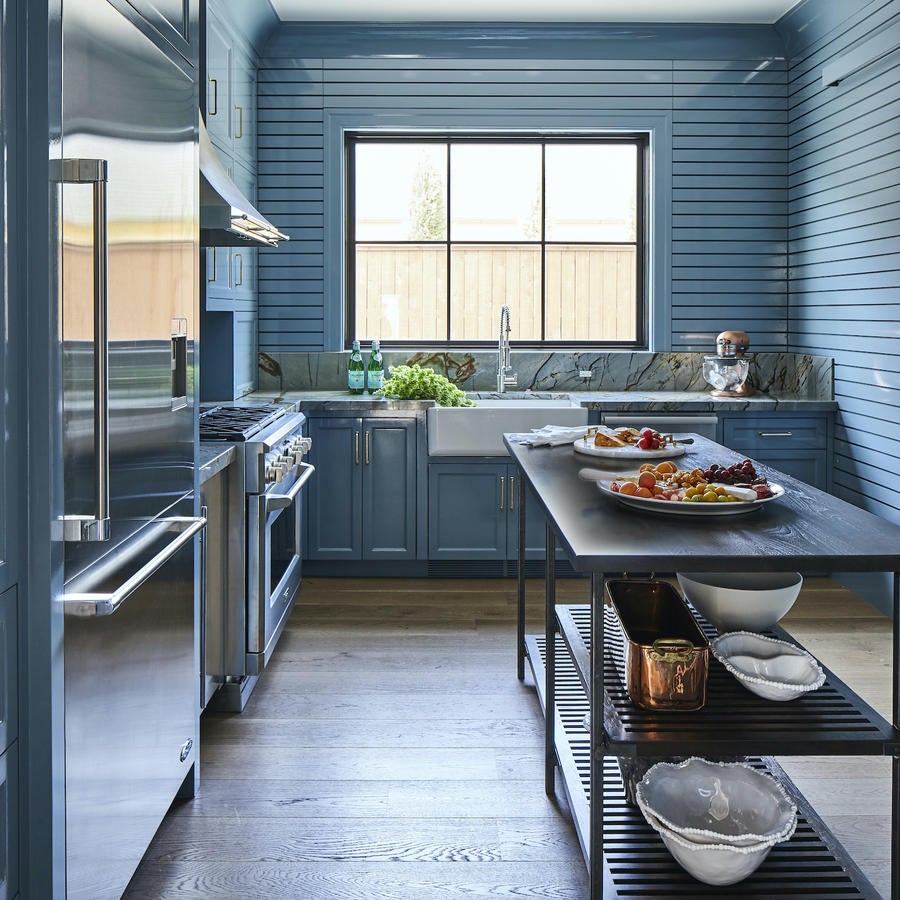

Where is your office now?
We have an office in a little center alongside four other designers. It’s a nice strip mall, basically—cute little brick buildings with storefronts. It’s actually been really fun, because they have different lines and clientele than we do. One designer in particular, we’ve really utilized one another a lot—she has a whole bunch of carpet and rug lines, so we’ve just bought stuff through her, and she doesn’t have the lighting lines we do, so she’s been buying lights through us. It’s turned into this fun little design business friendship.
What do you wish you would have known when you first started out?
The biggest thing is that you cannot avoid a hard conversation. It’s going to happen, whether it takes you that initial day or two weeks—and it’s not going to get any better [if you wait].
Hard conversations in what context?
Any of it! If something goes wrong—or even if something was installed the way you designed it, but you don’t like the way it came out. You know, you did your best, you thought this was going to be awesome, and then it gets in and you’re like, I think I want to change this. Somebody has to handle it. And it doesn’t mean that you’re sticking it to your client and making them foot the bill; it doesn’t mean that you’re footing the bill for all of it—but any monetary consequence aside, you have to look at the design and your integrity in a situation like that and have that conversation immediately. Don’t avoid it. That’s something I wish I would have practiced more at a younger age. Another thing is I now require [both spouses] to be there [at design meetings]. I will not have a conversation with just one person.
Ever? Or at the beginning?
Just at the beginning. We did this one project, and the husband said he didn’t want to be a part of it, he didn’t care—the wife could do whatever she wanted. But we spent three months on this project and she loved it, but he didn’t like it. For me, it was like, I did not fail here, but I would like to prevent this from occurring again.
I can’t imagine that feels very good.
It doesn’t feel good! And they didn’t mind going through the redesign process, but it was so avoidable. We could have just had this conversation from the beginning. I’ve also had clients whose [partners] 100 percent don’t care and they’re completely out, and I’ve had other husbands who want to be involved in every single detail and the wife doesn’t care. You don’t know their personal relationship unless you spend a little more time with them, so for the initial meeting and any big sign-off meeting, we need all parties to be present. If someone wants to cut out early, and I know from their body language that they’re totally on board, that’s fine.
But you’ve got to be in the room.
You’ve got to be in the room, and I want to feel some kind of buy-in, or at least feel confident that if you’re saying you don’t care, you truly don’t.
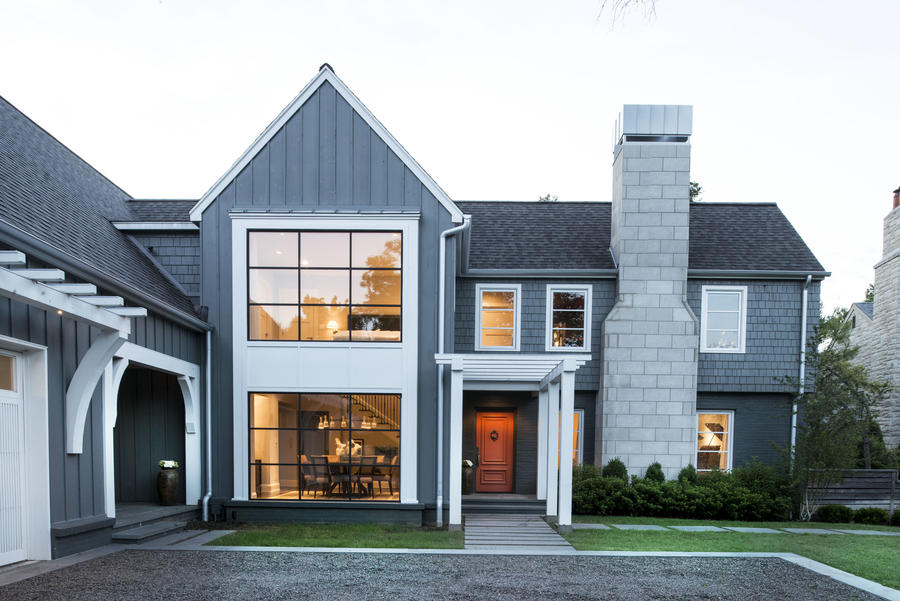
What does success look like for you these days?
For me, it’s really honing in on the right project and the right client. It’s about committing my time [wisely], because if you do a house that’s 2,000 square feet [with the wrong client], you spend just as much time or more on it [than a much larger project], trying to put a square peg in a round hole. It takes patience to wait for the seemingly perfect project, but the ones where you get to do the whole house—design all the finishes, the architecture and interiors—the more projects like those I can do, the better, because I feel like those are more true to what I like doing, and I get the most excited. I’m about to start one of those, and then I’m doing another whole-house interior.
Is it better financially to take that whole home project, too?
It definitely is. You’re not as scattered between a bunch of little things; your whole focus is on that [big project]—and it’s definitely better financially. I think when you’re trying to be a smaller firm, having just a handful of large projects is so much more satisfying than only the little ones, though I always let them creep in. I just did one, but I have to say, she ticked all the [other] boxes. She told me upfront, “I have X dollars to spend, I need this, here are the [inspiration] images,” and they were super consistent. She knew exactly what she wanted, and not in a way that takes the creativity out of it. I knew what her budget was, I knew her timeline, and I whipped out this three-bedroom cabin that’s going on her ranch, and it’s the cutest, most fun little thing I’ve done lately. For me, growth means being true to my goals so that I’m enjoying my work the most, and I’m really proud of it and feel passionate about it every day.
To learn more about Bailey Austin Bird, visit her website or find her on Instagram.
Homepage photo: Bailey Austin Bird | Courtesy of Bailey Austin Design
















